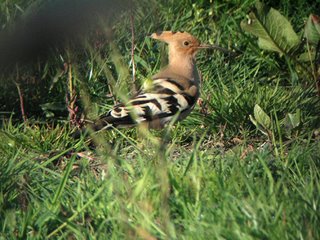
Monkwike Lost 1841
Sand Le Mere Lost by 1086
Waxholme Lost by 1892...
Thus begins a leaflet on 'The Lost Villages Trail' I picked up at Spurn Point in East Yorkshire recently.
At the very end of the point were the villages of Ravenser and Ravenser Odd. As they say on the news, Pete Crowther has more:
The earliest reference to the headland is in the 7th century A.D. when according to Alcuin's Life of St. Willibrord, Wilgils, the father of the apostle to the Frisians, Willibrord, is said to have settled there as a hermit. Known as Ravenser, from 'Hrafn's Eyr' or 'Hrafn's Sandbank', there are several references to Spurn in the Icelandic sagas, especially in connection with its use as an embarkation point for the defeated Norwegian army after the Battle of Stamford Bridge in 1066. The name Ravenser was also applied to a small settlement, probably of Danish origin, which seems to have been located somewhere near the base of the headland a mile or two south-east of old Kilnsea. Never itself a town of major importance and predominantly rural in character, Ravenser was to be completely overshadowed by what may be described as a mediaeval 'new town', its near neighbour, Ravenser Odd.
For those familiar with present-day Spurn with its handful of lifeboatmens' houses and pilots' look-out tower, it is difficult to imagine the existence of a thriving, bustling sea port with streets and buildings at the end of the peninsula. And yet at the height of its fortunes in the early years of the 14th century, Ravenser Odd was a town of national importance, regularly supplying the king with two fully equipped ships and armed men for his wars with the Scots. At the same time it had achieved borough status and was receiving harbour and other dues from more than 100 merchant ships a year. Benefiting from a Royal charter, it had its own market and annual fair, a town mayor, customs officers and other officials, and was furnished with cargo ships, fishing boats, wharves, warehouses, customs sheds, a tanhouse and windmills as well as boasting a court, prison, and chapel. The port flourished from about 1235, when it was founded, until its final destruction by the sea about 1360.
By about 1340 it must have been more than apparent that the town could no longer continue to prosper, and that even its physical survival was being threatened by the inroads of the sea. In his account of the abbacy of Hugh of Leven in the years from 1339 to 1349, the chronicler of Meaux Abbey writes: "At that time the chapel of Ravenser ... and the majority of the buildings of the whole town of Ravenser, by the inundations of the sea and the Humber increasing more than usual, were almost completely destroyed."
In 1346 an inquisition appointed by the king found that two thirds of the town and its buildings had been lost to the sea by erosion and that there remained only a third of the population able "to pay or support the tithes, tolls and other burdens hitherto assessed upon the said town ..." In the years that followed, from about 1349 to 1360, the sea completed its destruction of Ravenser Odd. The monkish chronicler of Meaux describes how the erosion exposed the bodies buried in the chapel's graveyard, much as it was to do some 450 years later at nearby Kilnsea: "The inundations of the sea and the Humber had destroyed to its foundations the chapel of Ravenser Odd, built in honour of the Blessed Virgin Mary, so that the bodies and bones of the dead were horribly apparent ... "
[Quotation ends]
If the Oddmen are gone, the birds remain. Here is a Spurn Point hoopoe, spotted last month. Visit the Spurn website and follow the links for more sightings.

No comments:
Post a Comment